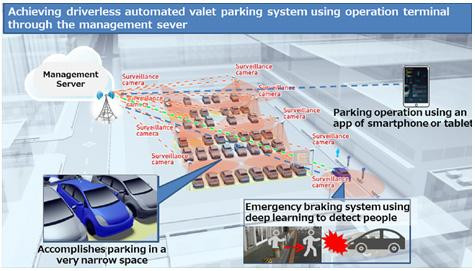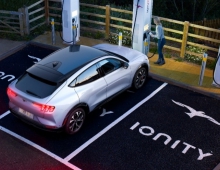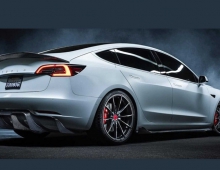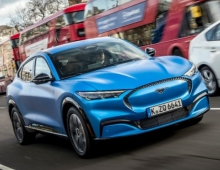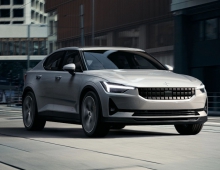
Toyota's New "LQ" Wants to Build an Emotional Bond with Its Driver
Toyota Motor today announced the "LQ", a concept vehicle that leverages advanced technology to build an emotional bond between car and driver.
The next generation of the Toyota "Concept-i", a concept vehicle first exhibited at the 2017 Consumer Electronics Show, LQ is equipped with automated driving capabilities and "Yui," an artificial intelligence-powered interactive agent designed to learn from the driver and deliver a personalized mobility experience.
Yui and LQ's automated driving technology, both developed in partnership with Toyota Research Institute (TRI), combine to learn and respond to individual preferences and needs.
LQ will be on public display at the "Future Expo", a special exhibition of the 2019 Tokyo Motor Show from October 24 to November 4. In addition, Toyota today announced "Toyota Yui Project Tours 2020", a public test-drive event scheduled to run from June to September 2020. The public will have the opportunity to register for a chance to be selected to experience the LQ and the "Yui" AI. By using a smartphone app in advance to provide their interests and preferences, selected participants will join a test drive of the "LQ" with "Yui".

Main Features
LQ features an on-board artificial intelligence agent named "Yui." In order to ensure safety and comfort, the AI can engage with the driver using interactive voice communications, in-seat functions designed to increase alertness or reduce stress, in-vehicle illumination, air conditioning, fragrances and other human-machine interactions (HMI). Yui can also select and play music based on the driving environment and provide real-time information on topics of interest to the driver.
In addition to research conducted at TRI, Toyota received support from the following companies in the development and implementation of Yui:
- JTB Corporation - Provided facility information and driving routes suitable to meet customer preferences;
- AWA Co., Ltd. - Offered streaming music suitable for vehicle driving routes and customer preferences
- NTT DoCoMo, Inc. - Provided a high-speed and stable communication environment by installing a 5G base station at the test drive base
Going forward, Toyota will continue to work on further expanding Yui's implementation through integration with other products such as smartphones.
- The LQ is equipped with an SAE2 Level 4 equivalent automated driving function.
- Panasonic's Driverless Automated Valet Parking System and a Screen AR-HUD
Panasonic has developed a driverless automated valet parking system and an AR-HUD (Augmented Reality Head-Up Display).
The driverless automated valet parking system achieves fully automated driving (SAE Level 4) in limited areas, while the AR-HUD offers safe, comfortable navigation. These technologies will be installed in Toyota's concept car, LQ.
This system is achieving driverless automated valet parking without dedicated expensive sensors. It accurately identifies the position of own vehicle by using multiple conventional in-vehicle cameras, sonars, and radar sensors as well as a 2-D road map. The system enables safe parking by finding an empty space and detecting pedestrians who enter the roadway by linking to surveillance cameras in a parking lot and a control server. Driverless automated valet parking accomplishes parking in a very narrow space up to a minimum of 20cm clearance between cars, because it is unnecessary to open or close the doors after parking. An in-vehicle emergency braking system that detects people by using deep learning helps to prevent accidents.
A large image that gives a sense of depth is superimposed on the actual space in front of the driver's seat. Based on the information from the vehicle, the AR-HUD indicates route information and obstacle alerts just like physical markings on the road. It presents a high-quality image on a large screen with minimal distortion by using the company's proprietary optical technologies--refined through the development of audio-visual products--to reduce misalignment between the actual space and the image.
This system is expected to assist with safe driving by reducing the movements and focus readjustments of the driver's eyes by presenting information intuitively. It will also reduce the misalignment caused by vibration between the actual space and the displayed image by using proprietary vibration compensation technology, achieving navigation that is easier to see and understand.
- Seat with alertness and relaxation functions (world-first) (Jointly developed with Toyota Boshoku Corporation)
LQ's seating system consists of multiple inflatable air bladders embedded into the seat with an in-seat air conditioning system to help keep the driver awake or relaxed depending on the driving situation.
When the system recognizes that the driver is tired, it inflates the air bladder in the seat back to support an upright sitting posture and directs cool air from the ventilation system located in the seat.
When conditions allow the driver to relax, such as in automated driving mode, the air bladder in the seat back gradually inflates and contracts to encourage abdominal breathing.
Other advanced equipment and technology
New HMI functions
- LQ uses the roof and floor mat areas as acommunications platform to share information between the vehicle and passengers. Embedded lighting displays different colors to indicate automated or manual driving mode, and lights up different foot wells to indicate which passenger Yui is addressing.
- LQ can also communicate information such as road surface conditions to people inside and outside of the vehicle using the Digital Micromirror Device (DMD) installed in its headlights. The system can activate one million tiny embedded mirrors to project complex figures on the road ahead.
- Organic LED meter display - A first for Toyota, LQ's dashboard and meters are displayed using organic LEDs (OLEDs). The advanced instrument panel design wraps around the driver while ensuring high visibility.
- Air purification coating (Jointly developed with Aisin Chemical Co., Ltd. and Cataler Corporation) - LQ features a newly developed catalyst coating that decomposes ozone into oxygen on the radiator fan, allowing ozone near the ground surface, a cause of photochemical smog, to be decomposed as the vehicle moves. Toyota has measured the effect of the coating as purifying about 60 percent of ozone contained in 1,000 liters of air over the course of an hour drive.

- Design
- The LQ cabin is designed with a futuristic silhouette that puts Yui at the center of the instrument panel, with lines that flow from the inside of the vehicle out across its exterior. The minimalist interior is smooth, with key elements like air conditioner vents hidden behind invisible registers. The 3D-printed center console is reinforced using the design technique of topology optimization, which provides optimal strength and supports an advanced vehicle interior with fewer support structures visible to the driver. The exterior doors feature glass that connects with the interior of the vehicle.

